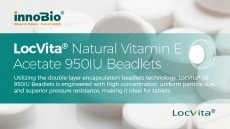Testing failure, specification limits cited in FDA warning letters

Among its recently posted warning letters, FDA issued two to dietary supplement companies that shed light on its views of proper quality control procedures. In a letter to Unique Encapsulation Technology LLC, the agency cited the company for issues surrounding its handling of rejected lots of material and the testing of those lots. And in another letter, this one issued to Wellington Foods, the agency cited the company for the rare instance of having too much of an ingredient in a product, rather than the common issue of not having enough.
In the Encapsulation Technology letter, the agency cited the company, which is based in Landing, NJ, for an improper procedure regarding an incoming lot of material. A lot of vitamin K2 (of the MK4 variety) was found to be out of specification for microbial contamination. “Instead of rejecting the component, you continued to re-test the component and finished product for the microbial specification until the test results indicated that the established specification was met,” the agency said.
Rejection procedure not followed
According to FDA, the company cited a 2011 study that supported its approval of the material, but did not provide sufficient explanation for the connection of the study findings to the incident in question, which occurred in 2016. And the agency said the company claimed to have re-calibrated its apparatus but did not provide documentation of that event.
“The key point here is that you can’t keep testing something until you get the result you want,” attorney Justin Prochnow, a shareholder in the firm Greenberg Traurig told NutraIngredients-USA. “Once you get a good result it doesn’t make all the bad results go away. If you get a sample that tests positive for, say, salmonella you can’t just test your way out of that.”
Prochnow said there are situations in which an out-of-specification lot of raw material can be brought into specification. But how that is done needs to be carefully documented, and it needs to be done in an industry-accepted way for dealing with the specific issue, whether it is a microbial problem or something else.
“Once you get that acceptable result you’d better have a really good basis for why that subsequent test was different,” he said.
Upper limits in specifications
In the second warning letter, this one to Corona, CA-based Wellington Foods, the agency cited the company for something Prochnow said is highly unusual. FDA said the company had a number of “super potent” products in which the levels of magnesium, potassium, copper and selenium along with a couple of other ingredients were in excess of the label claim, and beyond a reasonable variation. Just how much beyond is impossible to say, as this particular warning letter was more heavily redacted than usual, and the specific amounts were left out, though it’s reasonable to assume the levels did not approach toxicity, as FDA did not call for an immediate voluntary recall of the products.
Prochnow said the natural tendency for companies to cut costs where possible makes this type of ‘super potent’ situation rare. But still, it’s something that is supposed to be accounted for in product specifications and often is not. And Prochnow said those upper limits have to have a scientifically valid reason for being set where they are. Similar to the testing question, you can’t just expand your envelope of acceptable concentrations of an ingredient to account for an out-of-spec lot of product.
“There are still a fair amount of companies that don’t have upper limits on their specifications. And if you decide to change that upper limit, you have to have a basis for that. The basis could be something like the potassium dissipates over time so we need to have a higher upper limit so that we can still meet label claim at the end of the shelf life,” he said.
















